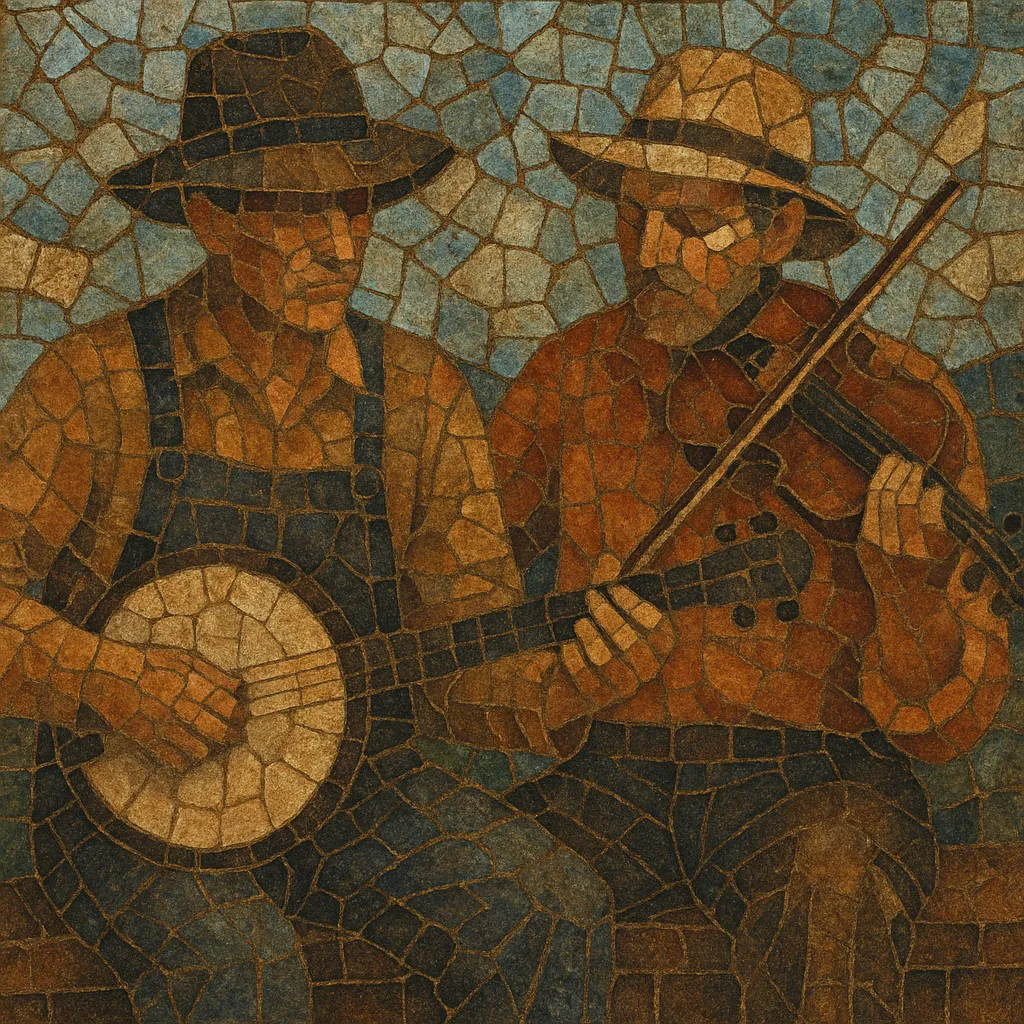Old-time is a North American string-band tradition rooted in the rural South and Appalachia, where fiddles and banjos lead dance tunes, ballads, and breakdowns. It emphasizes a steady, trance-like groove for social dancing, ensemble playing over solos, and strong melodic riffs supported by drones and rhythmic ostinati.
The sound blends British Isles balladry and fiddle repertory with African American banjo technique and rhythmic sensibilities. Tunes are commonly modal (Dorian, Mixolydian, Aeolian), arranged in two repeated strains (AABB), and played for extended durations to serve square and contra dancing. Vocals, when present, are often old ballads or topical songs delivered with a plain, direct style.
Old-time coalesced in the 1800s in the Southern United States, especially the Appalachian region. Anglo-Scottish-Irish fiddle tunes and ballads met African American musical practices, notably the banjo (of West African ancestry) and rhythmic phrasing, producing a distinct fiddle–banjo core sound. Music served community functions: house parties, barn dances, and local gatherings where tunes were played for long stretches to accompany figures of square and contra dances.
With the advent of recording, the music entered the commercial sphere. Fiddlin' John Carson’s 1923 recording for Okeh is often cited as a breakthrough. Sessions like the 1927 Bristol Sessions (produced by Ralph Peer) introduced acts such as the Carter Family and Jimmie Rodgers to a national audience, while groups like Gid Tanner & the Skillet Lickers and Charlie Poole & the North Carolina Ramblers popularized string-band sounds. Radio barn-dance programs (e.g., WSM’s Grand Ole Opry) further amplified the style.
After World War II, bluegrass and modern country drew heavily from old-time but emphasized virtuosic solos and slicker production, nudging old-time back to community and regional circuits. The folk revival of the late 1950s–1960s (with The New Lost City Ramblers and important reissue projects) renewed interest in source musicians and repertoire. Fiddlers’ conventions (e.g., Galax, Union Grove, Mount Airy) became hubs for learning, contesting, and transmission.
Old-time thrives in festivals, jams, and dance communities across the U.S. and beyond. Musicians preserve regional bowings and tunings while composing new tunes in traditional idioms. Archival recordings, fieldwork, and online lesson culture have widened access. The style’s communal ethos—unison melody, hypnotic groove, and dance-first orientation—remains its defining hallmark.


